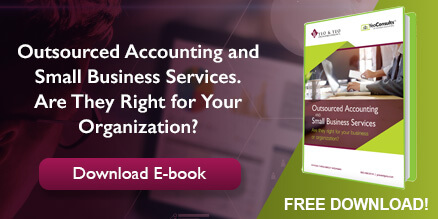
Six Cash Flow Management Tips
One of the biggest financial challenges that small business owners face is supervision of cash flow. Managing cash flow is of the utmost importance, and incorrect management of your cash flow could result in significant cash flow gaps and can put a healthy company out of business.
A cash flow gap transpires when your business expenses (cash outflows) are due before revenue is received (cash inflows). This does not mean that you cannot afford the expenditures; it is simply a timing difference in which the cash is not yet available to pay your bills. Cash flow gaps can affect small business owners in several ways. Here are a few tips that can help you avoid deficiencies in your cash flow management.
1. Have a broad frame of mind
Always ask how this purchase will affect your cash flow. Analyze the costs and benefits of each transaction. Do you have enough cash on hand or credit to access? Do not follow through with the transaction unless you have favorable terms.
2. Create a forecasted budget and compare it to costs incurred
Create these on a weekly or monthly basis, while accumulating into an annual budget. This budget will show where the cash is flowing and prompt opportunities to shrink cash outflows. Including a variance in the budget (the difference between actual and forecast) will show you over or under budgeted revenues and expenses. From there, adjust the budget to focus on areas of improvement.
3. Stay conservative with timing
Do you expect to be paid in 5 days? Budget it as 10. Issue an invoice for 20 days? Expect to receive that money in 30 days. By establishing that buffer, you will have the ability to better manage your expectations, as to avoid a cash flow gap.
4. Maximize cash inflows and shrink cash outflows
This is especially important if the company has a project that is unusually large or complex. At that point, consider requesting a security deposit of half the amount owed and always pursue opportunities to bill additional amounts if products/services need modification, or are not specified in the original contract. Pursue ways to make payment simple for a customer through automated bill pay or payment schedules. Offer options to receive upfront cash for future costs to secure future sales and aid with inventory replenish scheduling. Lastly, decide whether or not to offer layaway programs or pre-payment plans as an alternative to sale and payment plans.
Business owners need to stay on top of bills owed and ensure payments are accurate and timely. Set up automated payments, but ensure the proper amount is being deducted. Some other cost-saving approaches include: repairing equipment rather than replacing it, buying used instead of new, delaying upgrades as necessary, and negotiating goods and services.
5. Build a cash reserve
Determine what you can reserve in a week, divide it by five business days and pay yourself that amount per day. Having this cash reserve could be used as a way to face cash flow gaps if they occur.
6. Make conscious decisions when it comes to administrative costs
There are two options for accounting: in-house or outsourced. Is your in-house accounting work shorting quality? Would it be more beneficial to rely on the professionals? Outsourced accounting does not necessarily imply it is more expensive, but it does point toward quality, timely and accurate work. If the decision is made to outsource, the only heavy lifting would be to obtain the financial information for the accountant to process.
Cash flow is the lifeblood of any business and those who can efficiently manage their cash flow will find that it can improve other aspects of their organization. For more information or questions, contact one of Yeo & Yeo’s consulting professionals.

